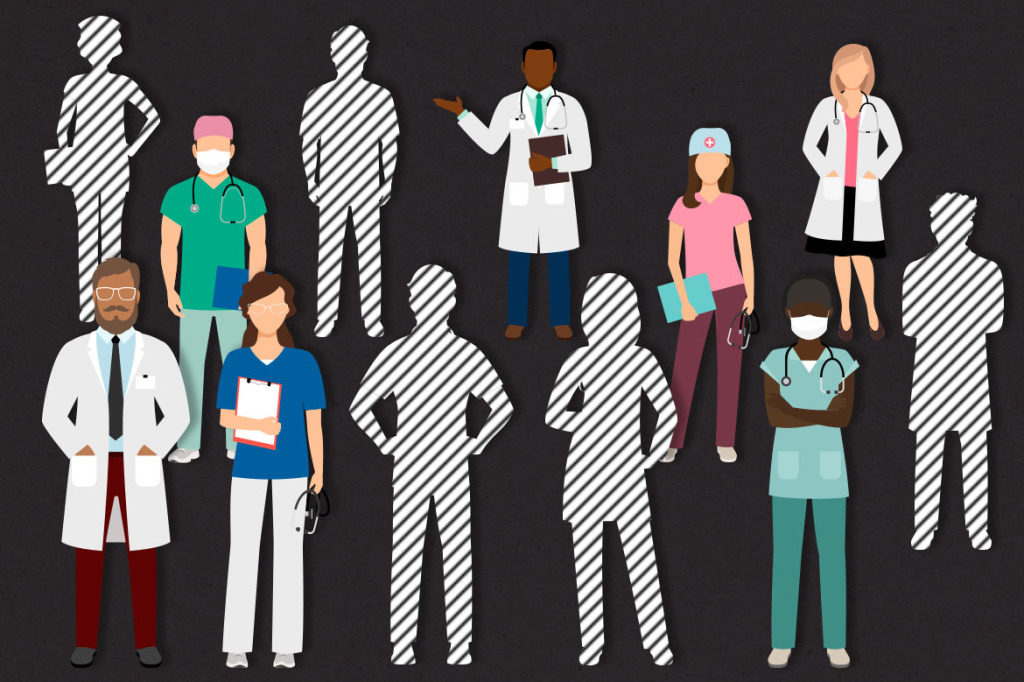California sets up body to deal with health worker shortage
Health and education leaders across California have joined forces with business and labor leaders to create a blueprint for policymakers in dealing with workforce shortages in health care.
The California Future Health Workforce Commission, unveiled Wednesday, includes two dozen representatives from businesses, organized labor, schools and hospitals. It will meet throughout the year to discuss the state’s current and future health staffing needs and suggest ways to meet them. Its members hope their findings will lead to new policies and greater investment in training health care professionals. They also hope their recommendations will help other states grappling with similar problems.
Ensuring adequate health care staffing is increasingly important because more Californians are insured and schools cannot produce physicians, nurses and other providers fast enough to serve them, said Jeff Oxendine, a dean at the University of California-Berkeley’s School of Public Health and co-director of the commission.
A lack of qualified professionals can also drive health care costs higher by heightening the demand for their services.
Three focus areas
The commission plans to focus on three areas: primary care, mental health and the aging population.
“We have a greater demand for health services now,” Oxendine said. “With the aging, increased diversity and the growth of the population, that is only going to put more strain on the system.”
California’s health care staffing shortages are well documented and projected to widen as the population grows and physicians retire. The state will lack about 4,700 primary care doctors by 2025, according to a recent report by the Healthforce Center at University of California-San Francisco. The Central Valley, Central Coast and southern border areas will be hardest hit, according to the report.
To ease the shortage of primary care physicians, for example, medical schools could accelerate training so students could graduate faster. To help seniors age in their communities rather than in nursing homes, the state could ensure that home care workers earn more than the current average of about $11 an hour.
“Those who provide this kind of care are for the most part paid a wage that doesn’t particularly command long-term job loyalty,” said Kevin Barnett, senior investigator at the Public Health Institute and co-director of the commission. “Looking at the demographics, we have to come to terms very quickly with that.”
Barnett also cited a growing need for more people to work outside the clinical setting, helping patients with housing, food, transportation and other services that can affect their health.
Not enough providers
Many areas, particularly in rural parts of the state, also do not have enough psychiatrists and other behavioral health providers to serve their communities. That creates a burden for patients who may have to travel long distances for mental health care or substance abuse treatment.
“We still have a ways to go to ensure timely access to quality [behavioral health] services, particularly for our Medicaid populations,” Barnett said.
In addition, the commission plans to address the lack of diversity among health workers. Latinos make up nearly 40 percent of the population but only 7 percent of doctors and 8 percent of nurses are Latino, according to the Medical Board of California.
Informing young people from underserved areas about health careers and providing opportunities to pursue them could help with recruitment and retention of a more diverse workforce, Oxendine said.
Health employers consider workforce sufficiency to be a “business imperative,” Oxendine said. Increased competition for a shrinking pool of medical professionals drives up costs, he said.
One of the commissioners, physician Hector Flores, said one of his priorities is to examine whether health care workers can provide services that are better, faster and cheaper. One way to do that could be to have more community health workers and medical assistants working alongside doctors and nurse practitioners, he said.
Team-based care
“Team-based care is not only better and friendlier for patients, but it also reduces costs overall,” said Flores, chairman of the family practice department at White Memorial Medical Center in Los Angeles.
University of California president Janet Napolitano and Dignity Health president Lloyd Dean will co-chair the commission, which is scheduled to hold its first meeting next month and plans to issue research and recommendations throughout the year for state legislators, schools, health care employers and others.
Four organizations are funding the project: The California Endowment, California Health Care Foundation, The California Wellness Foundation and The Blue Shield of California Foundation. (Kaiser Health News, which produces California Healthline, has received support from each of these organizations.)
This story was produced by Kaiser Health News, an editorially independent program of the Kaiser Family Foundation.


